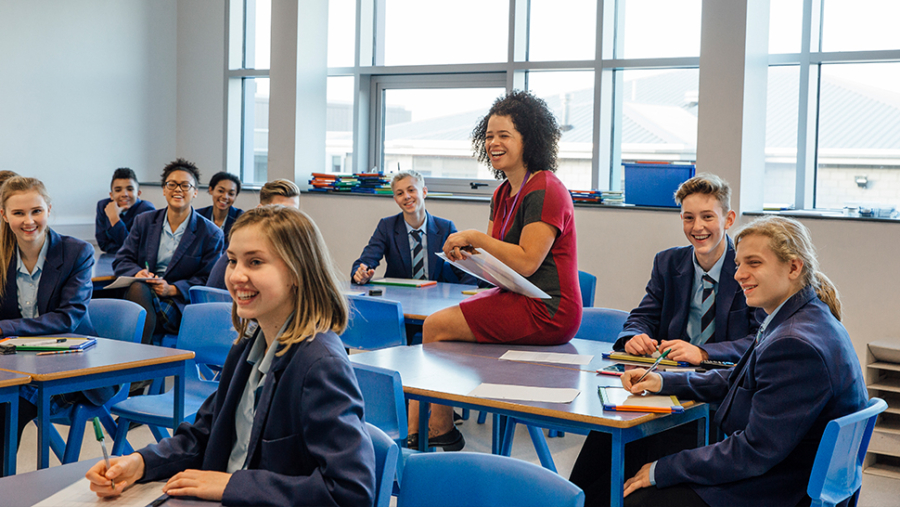

On 5 November 2020, the Chancellor announced that the Coronavirus Job Retention Scheme (the “CJRS” or the “Scheme”) was being extended to the end of March 2021. Further guidance on the Scheme was released on 10 November 2020 and on 13 November 2020, the fourth Treasury Direction was published.
Until the end of January 2021, the Government will pay up to 80% of an employee’s normal pay for hours not worked (subject to a cap of £2,500 per month). Employers will be responsible for employers National Insurance and pension contributions and can “top up” employee wages above the Scheme grant at their own expense. The Scheme will be reviewed in January 2021. Employers will have the flexibility to “fully furlough” employees or make use of a “flexible furlough” arrangement. Please refer to our most recent note on the extended Scheme which can be found here. Details for how the Scheme will operate in February and March are yet to be confirmed.
Now that the Scheme has been extended to the end of March 2021, a question we are frequently being asked is whether a school can furlough staff, including teachers, over the Christmas holiday period.
In summary, it is our view that, in some circumstances, it may be possible to furlough staff during the Christmas holidays, but schools should be aware of the risks before deciding whether or not to do so. Any decision should ideally be made on a case by case basis, taking into account the School’s particular (financial) circumstances and the contractual position of staff. In many cases, we consider that it is unlikely to be within the spirit of the Scheme to utilise it in this way.
The latest guidance
The CJRS is designed to support employers whose operations have been severely affected by coronavirus (COVID-19). The latest employer guidance states that employees can be furloughed if you “cannot maintain your workforce because your operations have been affected by coronavirus”. It also refers to employers using the furlough scheme if “they are unable to operate or have no work for [employees] to do because of coronavirus”. The fourth Treasury Direction also clarifies that amounts claimed under the Scheme should be in respect of employees “whose employment activities have been adversely affected by the coronavirus“.
The Coronavirus (COVID-19): financial support for education, early years and children’s social care guidance, which has not been updated since July 2020, makes it clear that, although the Government expects independent schools to continue to access the support schemes, it expects to see the level of claims for the CJRS decrease, with pupils returning and schools fully opening.
It remains the case that schools which receive public funding, such as academies and maintained schools, are generally unable to furlough staff and access the Scheme.
Ultimately, it appears that schools may be allowed some discretion when accessing the Scheme, but should properly consider whether a claim for a furlough grant for the school holiday period is within the spirit of the Scheme.
Christmas holidays
It is important to consider the School’s particular circumstances and the contractual position of staff in order to consider whether furlough during the Christmas holidays is an appropriate option.
Schools may be considering furloughing staff for the Christmas holidays as a means of saving costs and reducing the prospect of future salary cuts and/or redundancies. It is clear that schools have been affected by coronavirus in terms of fees and other income streams and some schools are likely to be able to demonstrate a more severe impact than others. Where a school is considering cost saving measures such as redundancies, pay cuts, pay freezes and has seen a significant reduction in income, this is likely to support its justification for accessing the Scheme.
In terms of the contractual position, for all staff, including teachers, if the contract of employment expressly states that all school holidays are ‘holiday’ (as opposed to the employee not usually being required to work), it may not be possible to furlough those staff.
For teaching staff, schools should consider what, if any, work a teacher may be required to do over the Christmas holiday period. In contrast to the summer holidays (when teachers will often be required to plan ahead for the new academic year, prepare their classrooms and attend results days etc), Christmas tends to be a period during which a school largely shuts down. It is therefore likely that a teacher would not normally be required to work during the Christmas break (and the school would not have any work for them to carry out).
The fourth Treasury Direction is clear that while an employee is furloughed, the employee must be instructed by the employer to cease all work in relation to their employment and that instruction must be given by reason of circumstances arising as a result of coronavirus. The obligation not to work over the Christmas holidays is unlikely, in most cases, to be as a result of coronavirus but would simply reflect the School’s usual requirements at this time of year. If evidence exists to demonstrate that such staff often work during the Christmas holidays, then this is likely to be helpful in justifying a decision to furlough in these circumstances.
Similarly, school staff who work term-time only do not usually designate school holidays as a holiday from work, but these are instead non-working weeks. There is no specific information in the latest guidance on whether a member of staff is required to be at work in order to be furloughed under the CJRS. That said, it is difficult to see how a school could in those circumstances justify furloughing a term-time only member of staff when s/he would not usually be carrying out any work for the school during this period.
For year round staff, the situation may be different. Once again, the terms of their employment contract will be key, but it is more likely that, for some year round staff, furlough may be appropriate over the Christmas holidays if such staff would usually work at that time, but there is a reduced demand as a result of the pandemic. That said, if such individuals have already nominated to take annual leave during this period, they should not be placed on furlough at this time. The latest guidance reflects the previous guidance and confirms that employees cannot be placed on furlough “for a period simply because they are on holiday for that period”.
Irrespective of the above, if staff are already on furlough, for example if they are clinically extremely vulnerable and are unable to work from home, it is more likely that the School would be able to reasonably justify the continuing use of the Scheme for those individuals during the school holiday period. The greater risk is likely to arise in the case of a member of staff who is furloughed only for the Christmas holiday period.
Supply Teachers
The latest guidance makes specific reference to supply teachers and provides that such teachers are eligible for the Scheme in the same way as other employees and can continue to be claimed for during school holiday periods, provided that the usual eligibility criteria are met. The specific reference to the use of the Scheme during school holiday periods has resulted in some confusion when considering the question posed above.
We understand however that specific guidance in relation to supply teachers was included as supply teachers have experienced real difficulties in obtaining opportunities for work since the initial lockdown began in March. This is largely due to the fact that schools are expected to minimise social contacts through the use of bubbles. We recognise that, initially, many supply teachers were denied access to the Scheme due to concerns over its interpretation and the Government came under some pressure (particularly from the unions) to clarify the position.
It is our view that this additional section does not assist a school when assessing whether to furlough its staff during the Christmas holidays (save of course for any supply staff directly engaged by it). As such, the issues which we highlight above, and the considerations for the School, remain the same.
Conclusion
Accessing the Scheme in any circumstances is not without risk. If a school is faced with difficulties in maintaining its current workforce because it has been severely affected by coronavirus, then we consider that it may be acceptable for the school to consider furloughing some staff members during the Christmas holidays. Furthermore, where staff are already furloughed, the risks associated with continuing to furlough them during the Christmas holiday period are likely to be lower.
That said, the risk remains that HMRC may consider that schools should not furlough staff if they are not contractually required to be ‘at work’. Unfortunately, at present, we do not know how HMRC will approach this issue, but are aware that some schools have already been contacted by HMRC regarding their furlough claims. Furthermore, it is now a condition of making a claim that the employer accepts that HMRC will publish the names of those who have made claims and a “reasonable indication” of the amount claimed under the Scheme for the month of December onwards. Therefore, there may also be reputational issues to consider before schools decide whether or not to utilise the Scheme during the Christmas holidays.
Due to the complexity of the area and the associated risks, we recommend that schools seek legal advice on their specific circumstances.










